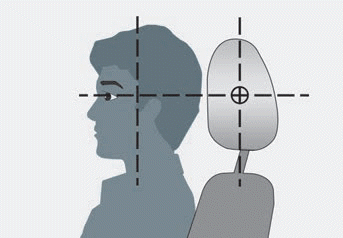Hyundai Venue: Engine Control System / Engine Coolant Temperature Sensor (ECTS). Repair procedures
Hyundai Venue (QX) (2020-2025) Service Manual / Engine Control / Fuel System / Engine Control System / Engine Coolant Temperature Sensor (ECTS). Repair procedures
| Inspection |
| 1. |
Turn ignition switch OFF.
|
| 2. |
Disconnect ECTS connector.
|
| 3. |
Remove the ECTS.
|
| 4. |
After immersing the thermistor of the sensor into engine coolant, measure
resistance between ECTS terminals 1 and 3.
|
| 5. |
Check that the resistance is within the specification.
|
| Removal |
| 1. |
Turn ignition switch OFF and disconnect the battery negative (-) terminal.
|
| 2. |
Disconnect the engine coolant temperature sensor connector (A).
|
| 3. |
Remove the water temperature sensor (B).
|
| Installation |
|
| 1. |
Install in the reverse order of removal.
|
Other information:
Hyundai Venue (QX) (2020-2025) Owners Manual: Braking System
Power Brakes Your vehicle has power-assisted brakes that adjust automatically through normal usage. If the engine is not running or is turned off while driving, the power assist for the brakes will not work. You can still stop your vehicle by applying greater force to the brake pedal than typical...
Hyundai Venue (QX) (2020-2025) Service Manual: Hood Assembly. Repair procedures
Replacement • Be careful not to damage the hood and body. • Removing or installing the hood requires an assistant...
Categories
- Manuals Home
- 1st Generation Venue Owners Manual
- 1st Generation Venue Service Manual
- Rear Combination Light Bulb Replacement
- Automatic Door Lock and Unlock Features
- To set Cruise Control speed
- New on site
- Most important about car
Head Restraints
The vehicle’s front and rear seats have adjustable head restraints. The head restraints provide comfort for passengers, but more importantly they are designed to help protect passengers from whiplash and other neck and spinal injuries during an accident, especially in a rear impact collision.
WARNING
To reduce the risk of serious injury or death in an accident, take the following precautions when adjusting your head restraints:
Always properly adjust the head restraints for all passengers BEFORE starting the vehicle. NEVER let anyone ride in a seat with the head restraints removed or reversed.
Copyright © 2025 www.hvenueqx.com




